Cuenca - Ecuador's People Friendly City
![]()
Four rivers converge in a broad and high valley of the southern Andes, rimmed by mountains. The valley has been the site of great cities of the Canari, Inca, and Spanish cultures. The rich agricultural region surrounding the city provided the early inhabitants with ample food, commercial opportunities and wealth. In fact, it is possible that the Inca city of Tomebamba, where Cuenca now stands, was El Dorado, the mythical city of gold sought by the Spaniards!
We arrived in Cuenca with great expectations after a three plus hour ride up from Guayaquil. We had read that Cuenca's Centro Historico was a UNESCO World Heritage site, designated in 1999, so we anticipated great things. Once checked into our hostel, we walked to Parque Calderon and realized that Cuenca was very different than Guayaquil, in our view, more charming and pleasant. The Parque, a verdant, flowery square with paths and benches, was surrounded by the vast Catedral Nuevo, la Catedral de la Immaculada Concepcion, towering on the west side, the modest white Catedral Vieja, El Sagrario, standing on the east side.
Walking just a few blocks south, we looked over the Rio Tomebamba with its rushing waters edged by a greenway, and out over the city to the surrounding mountains.
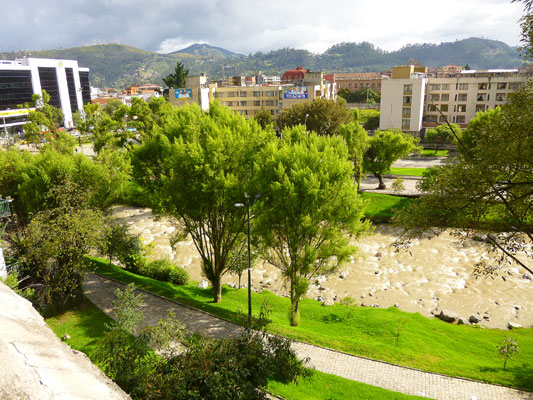

Near us, Calle Larga runs along the edge of the bluff, parallel to the river. Walking on, we enjoyed the grand, historic homes, which share the great views over the river.
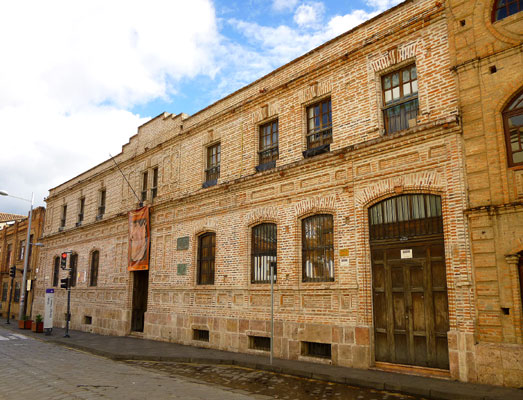
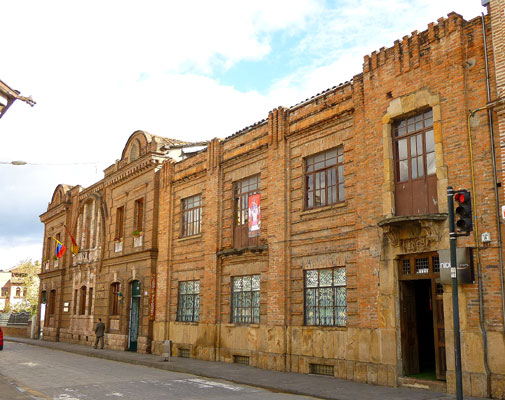
One special casa viejo was open to visitors. We were welcomed for a brief visit.
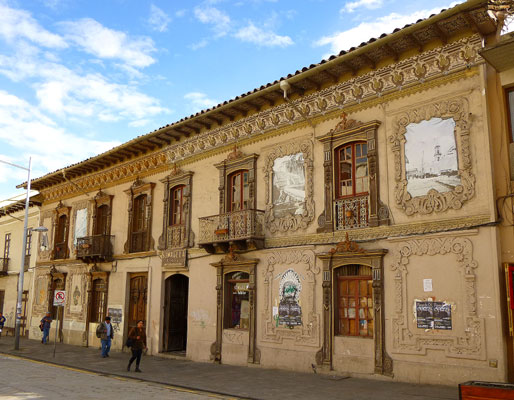
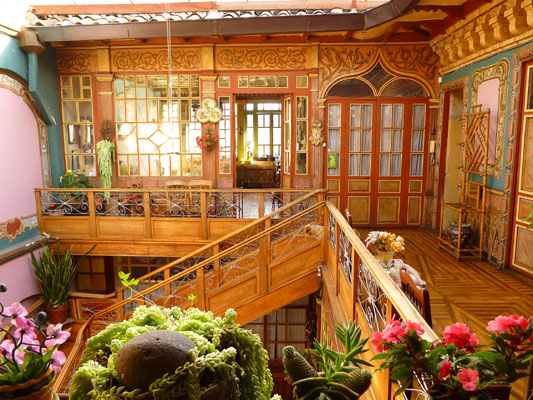
Wanting to see the riverside view of these homes, we descended to the Rio and walked back through the riverside park..
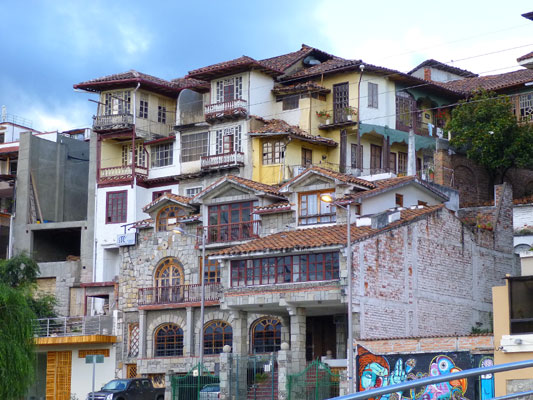
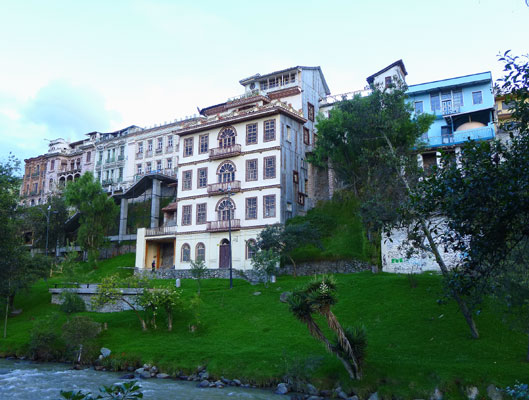
The rest of the Centro Historico occupies the top of this bluff, following the orthogonal (grid) plan specified by the Law of the Indies, still respected during the 450 years since the founding of Cuenca by the Spanish in 1557
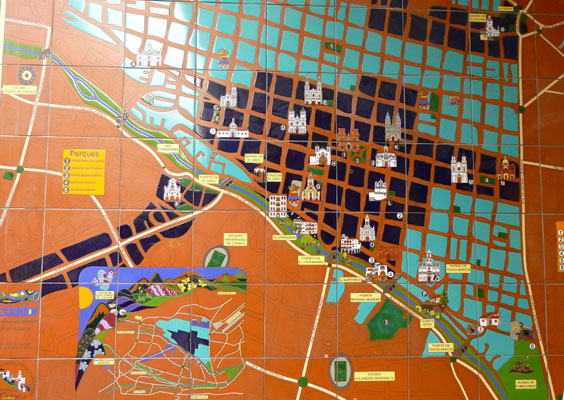
As we explored, we enjoyed the many classic buildings, all still in use and in good repair.
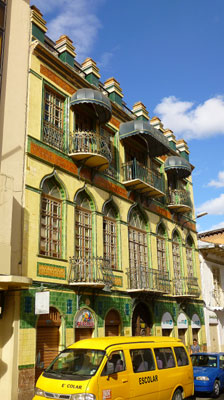
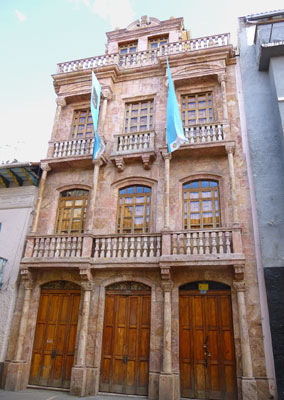
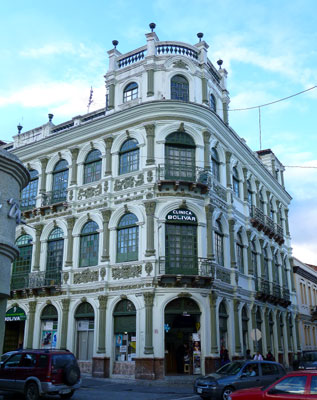
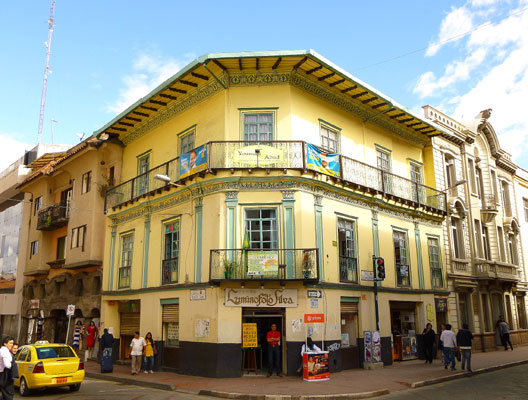
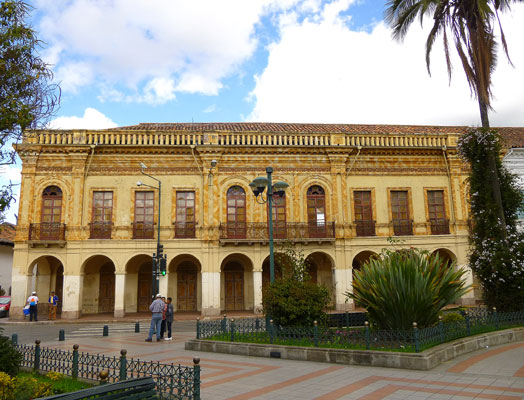
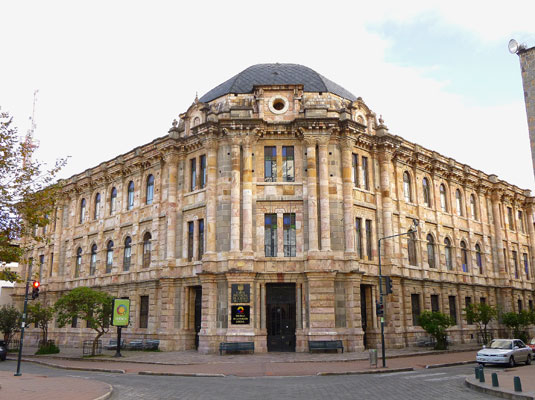
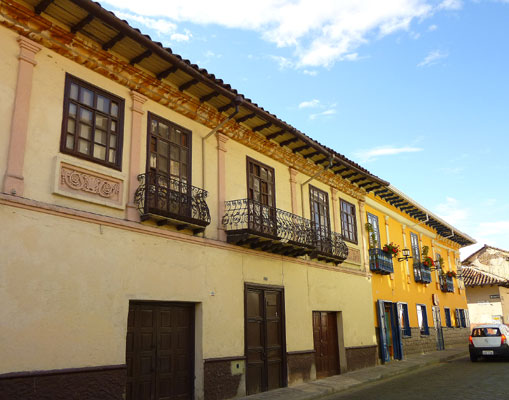
During our week in Cuenca, we visited the Museo del Banco Central and the archaeological site of Pumapunga just behind the museo,....
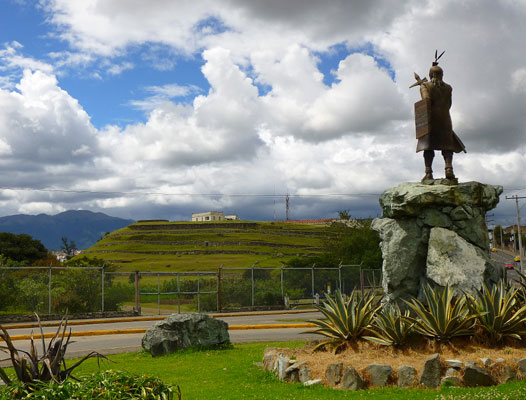
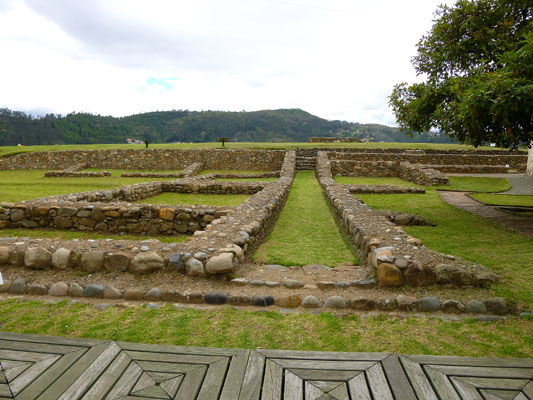
... as well as the Museo de las Culturas Aborigenes, to learn about Ecuador's many early cultures and to understand the diversity of the Ecuadorian people of today.
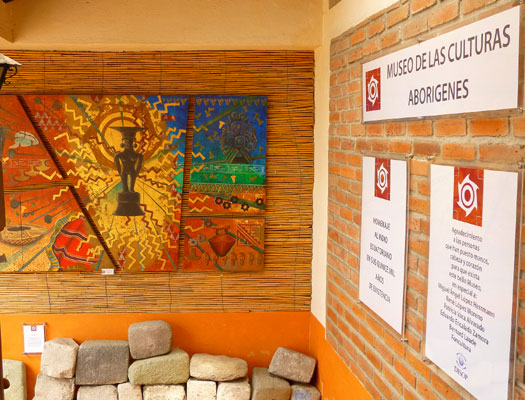
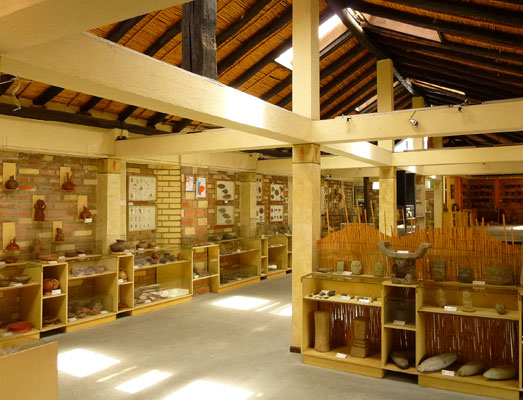
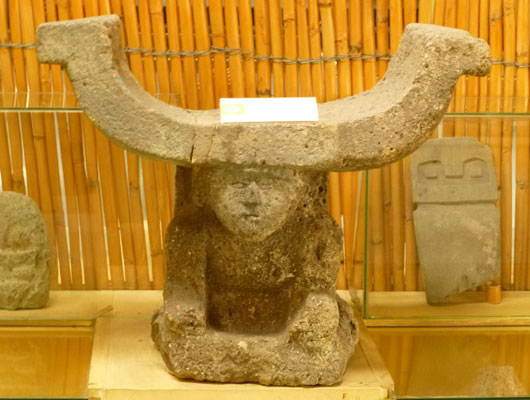
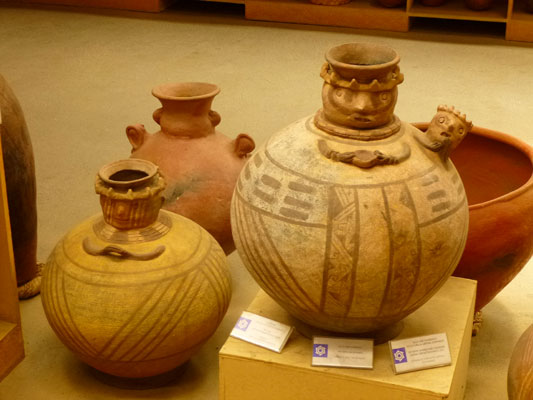
The Museo de Arte Moderno introduced us to Ecuadorian artist, Nelson Roman, whose large vivid works stirred our imaginations.
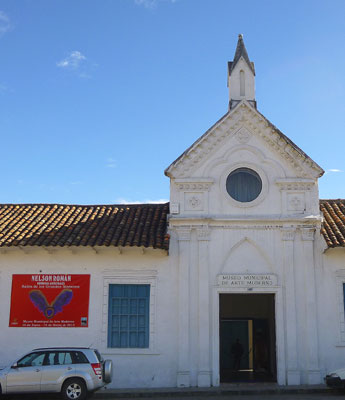
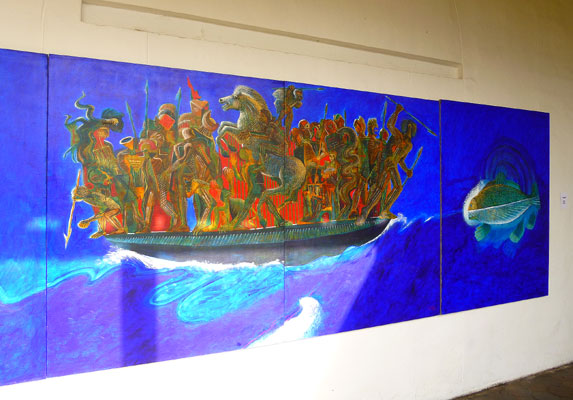
The Municipio, an excellent example of colonial architecture, offered an exhibition of paintings by a local artist.
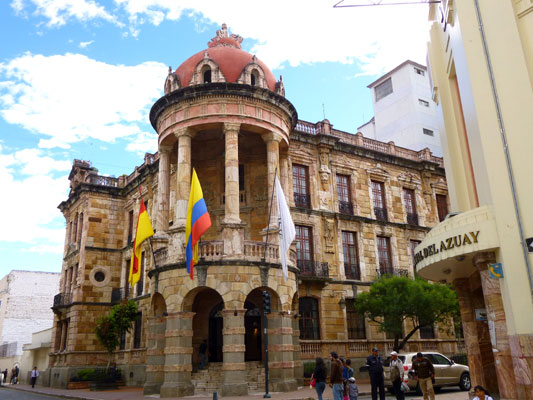
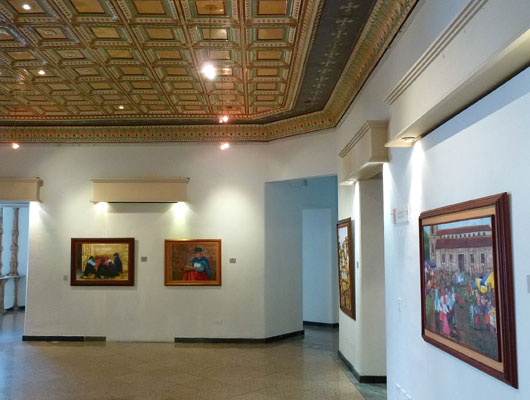
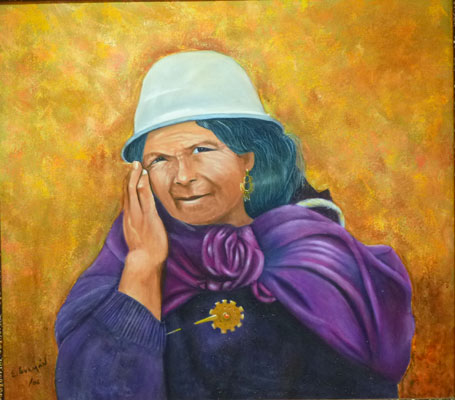
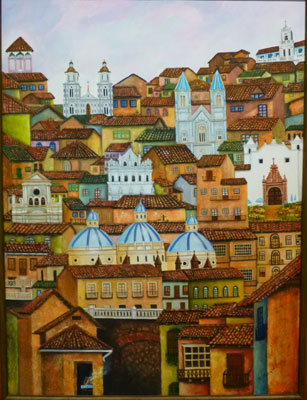
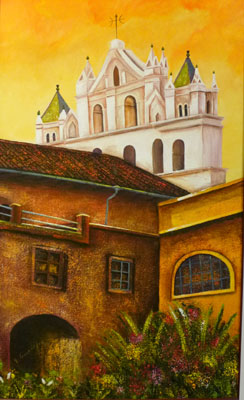
Through walks around the Centro Historico and the newer residential barrio south of the river, we gained a perspective about aspects of the People Friendliness of the city:
Pleasing and Efficient Physical Form
The streets of the Centro were lined with two and three story buildings with shops on the ground floors and residences and offices above. The Spanish colonial architecture offered a pleasant, charming streetscape.
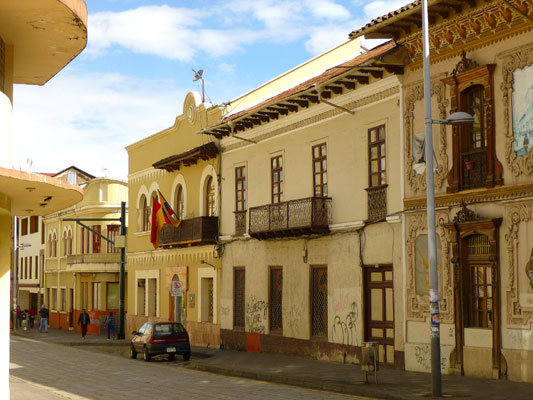
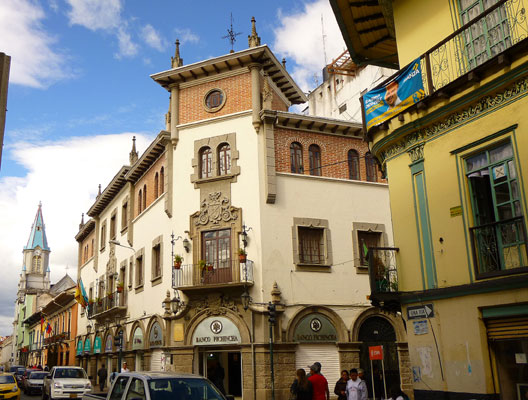
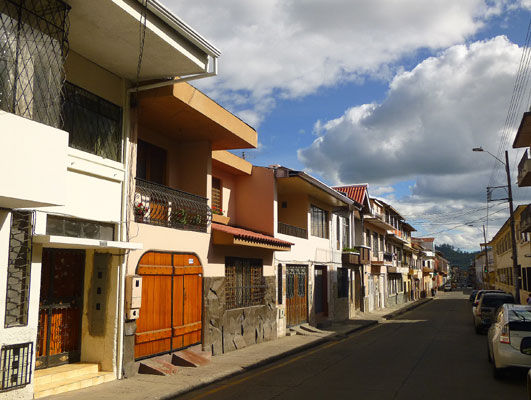
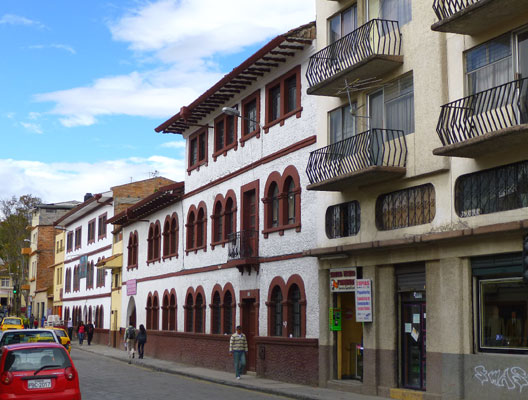
The many iglesias (churches) and plazas enhanced this effect. The Catedral Nuevo, with its grand doorway and blue domes, was spectacular.
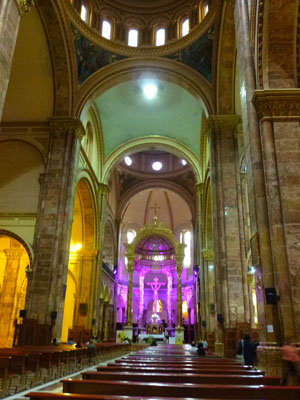
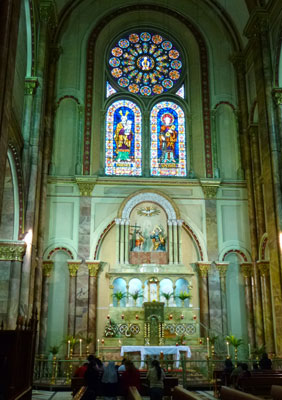
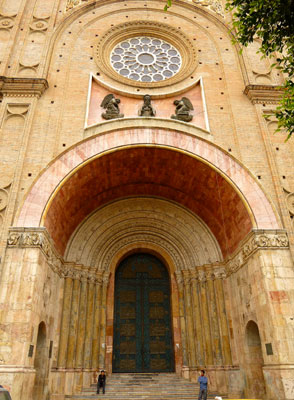
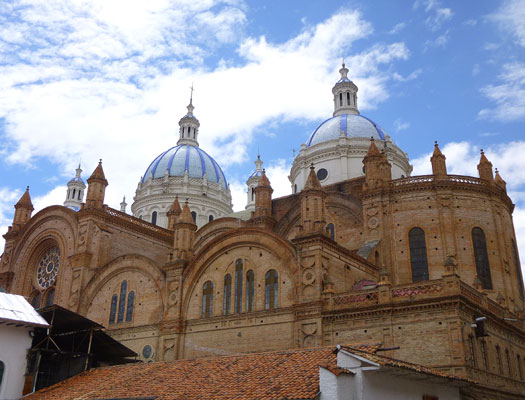
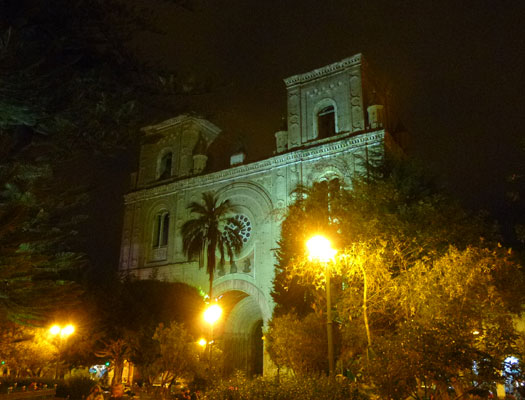
Many others offered wonderful sacred architecture and artworks.
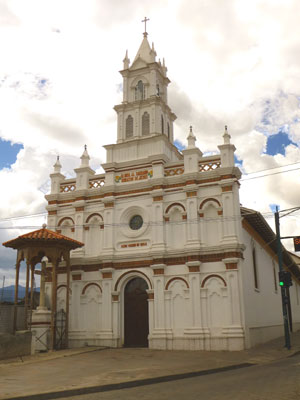
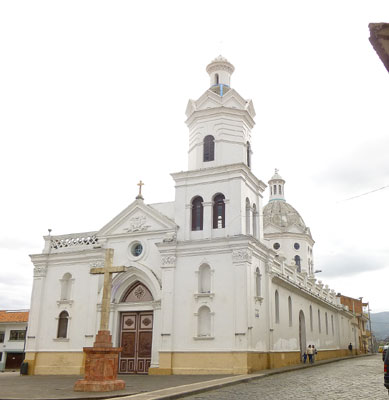
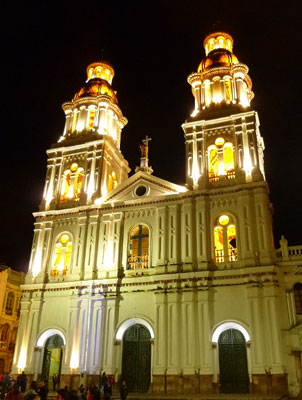
Across the Rio Tomebamba, the newer barrios offered housing alternatives including secure mid-rise condos and single family homes safely enclosed within walls. We speculated about whether some people chose these walled homes due to high crime caused by the inequality within the population, or for other reasons.
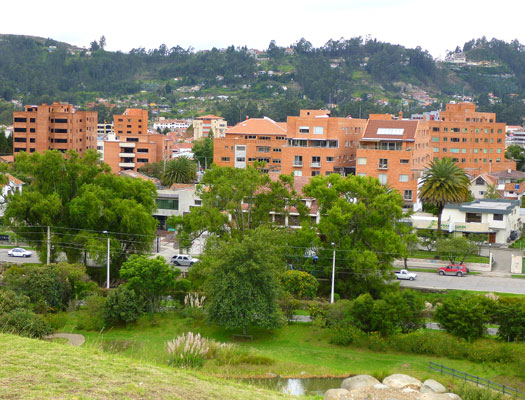
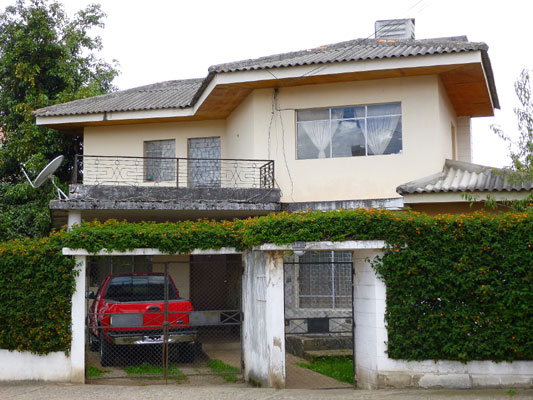
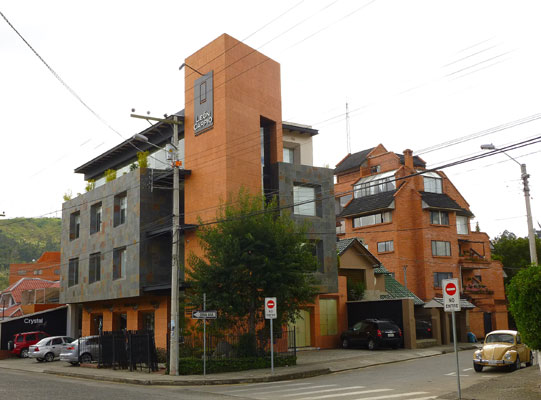
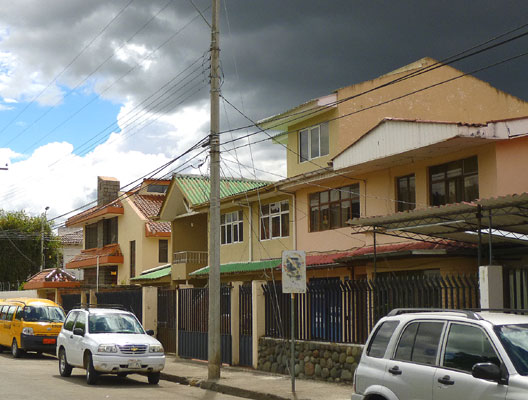
Mobility Options
Observing the traffic congestion in the Centro, one might imagine that there were no mobility options but, in fact, walking and bicycling offered additional alternatives for many trips, and a large fleet of blue buses plied the calles, offering another alternative. They were well used.
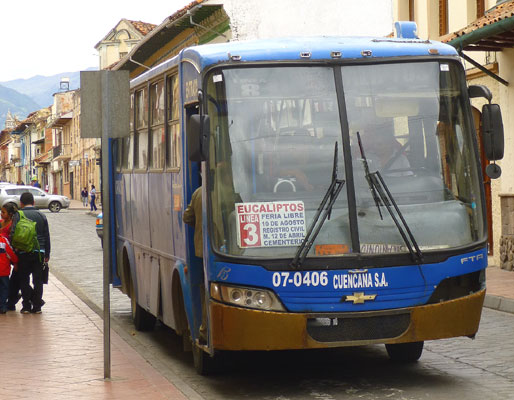
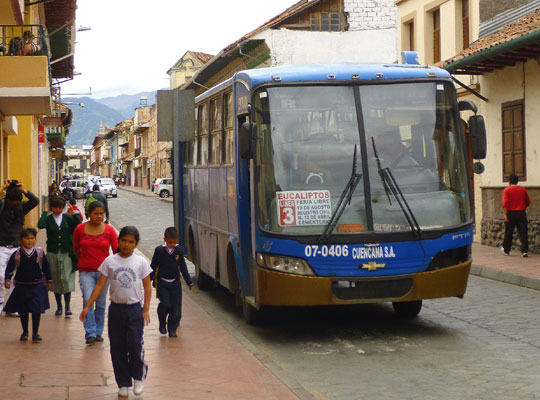
Coming in 2014, the Tranvia Quatro Rios, a modern tram system, will offer transport from the west side of the city, through the Centro and on out to the Terminal Terrestre (bus station), the aeropuerto, and the industrial park on the east side. Click here to learn more (opens in a new window).
Natural World Connections
The greenways along both the Rios Tomebamba and Cuenca offered connections to the natural world for walking, bicycling and just hanging out. Parques and Plazas were scattered all around beginning with Parque Calderon in the Centro.
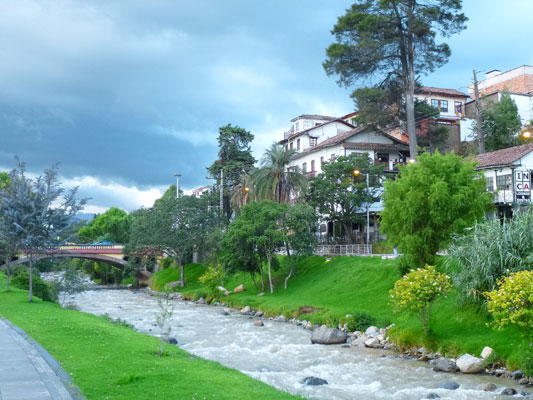
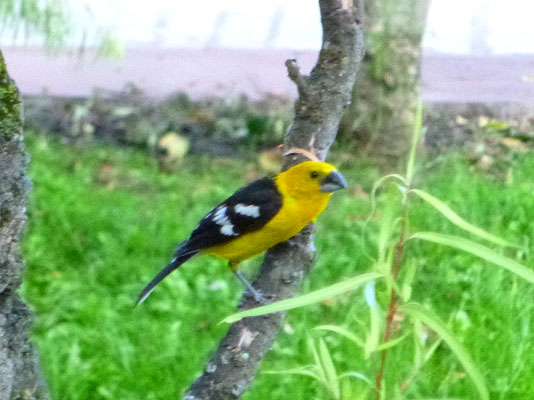
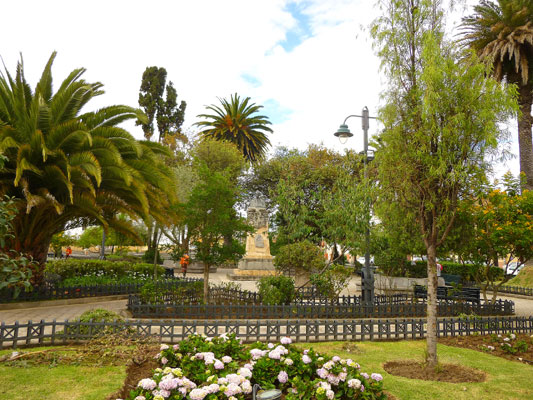
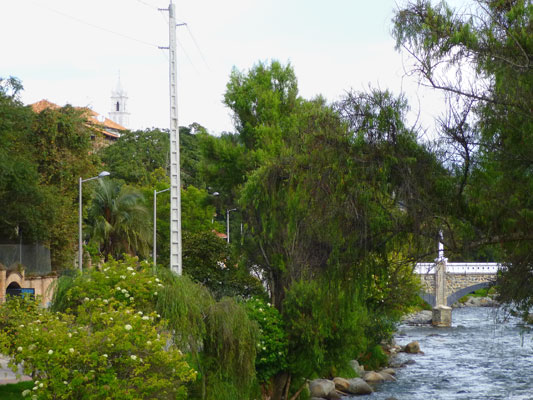
Parque Nacional Cajas, located 35 kilometers from Cuenca, offered 288 square kilometers of high altitude hiking and camping for the hearty. (pictures courtesy of Cuenca Turismo)

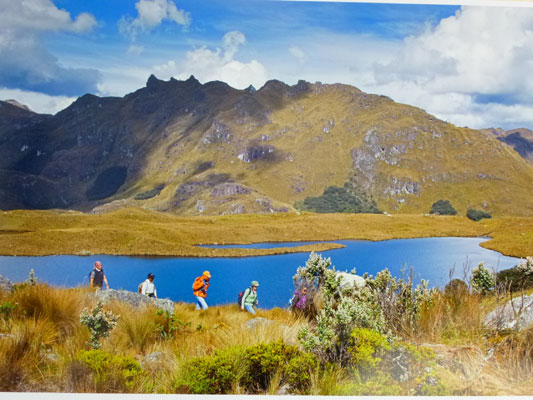
Considering these attributes, we'd consider Cuenca to be highly People Friendly and quite livable. It is totally understandable that so many Americans and Canadians are choosing to live here!
Click here to return to our 'Ecuador - First Nomad Journey of 2013' page
Click here to return to our 'Searching the World for People Friendly places' page
![]()